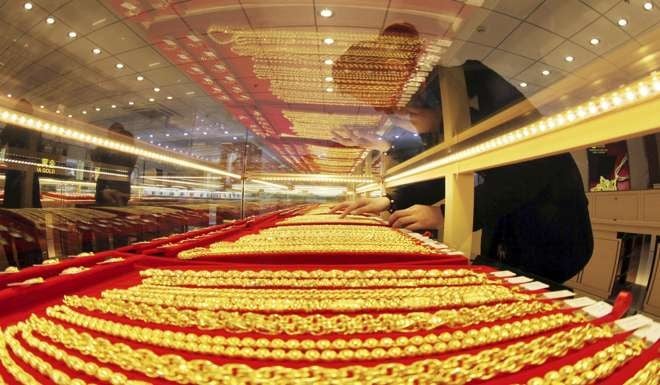
China stocked up on Swiss gold as turbulent year came to a close
Data shows imports from Switzerland soaring in December, at a time the yuan was falling and Sino-US relations looked shaky

China’s gold imports from Switzerland soared at the end of last year when Beijing was struggling to defend the yuan and incoming US President Donald Trump was casting grave doubts about Sino-US economic ties.
The Swiss Federal Customs Administration said in January that its gold bullion exports to China rose to 158 tonnes in December from 30.6 tonnes in November, according to GoldSeek.com, a website for gold investors.
Switzerland owns the world’s major gold refineries, with India and China its top export destinations. The Swiss customs data did not reveal details about the buyers in China. However, economists said rising corporate and individual demand ahead of the Lunar New Year and a possible purchase by the central bank – to diversify foreign reserves and counter any adverse impact from Trump’s remarks – could explain the surge.

Meanwhile, China’s gold consumption dropped 6.7 per cent to 975.4 tonnes from the previous year, though it still remains the world’s top gold consumer and largest producer.
The yuan’s depreciation in 2016, the bear stock market in China as well as external shocks such as Britain’s vote to leave the European Union and Trump’s surprising victory as an unconventional presidential candidate have all contributed to the steady demand for gold as a safe-haven asset.
“It is possible that the central bank is increasing gold reserves and reducing dollar holdings as a measure to adjust the composition of its foreign exchange reserve to counter any economic woes between Beijing and Washington,” said Zhang Baoqiang, a Beijing-based gold researcher.
“The central bank started to increase gold reserves in 2014,” Zhang said. But it is widely believed that the gold reserve data released by the People’s Bank of China does not show the full extent of the central bank’s holdings.
PBOC data showed gold reserves staying unchanged for the last three months of last year, at 1,678 tonnes.
However, World Gold Council data pegged China’s official gold holdings at 1,843 tonnes at the end of 2016, with the value of the gold accounting for 2.2 per cent of China’s forex reserves.
Gold prices are very sensitive to geopolitical turmoil and the monetary policies of major economies. The September 11 terrorist attack in 2001 drove gold prices up, as did the quantitative easing policies of the US Federal Reserve following the global financial crisis in 2008.
Trump’s plan to build a wall on the border with Mexico and his ban on Muslim immigration triggered strong protests in the United States and led to a drop in global markets and the greenback. The lingering risks of a US trade war against China will add further turbulence to financial markets.
“Trump is a special factor for the rise in gold purchases, but China had started to diversify its foreign reserves long before, increasing its holdings of non-US-dollar currencies and gold, and also increasing holdings of other strategic assets, such as oil,” said Tan Yaling, the head of the China Forex Investment Research Institute.